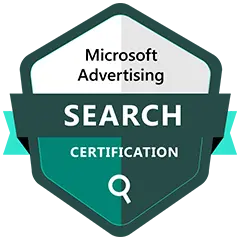In the competitive Internet world, if you have developed a mobile application or to do so, then you also need to promote it further. We know that marketing is not easy to do job as there is so much competition in the field, but still, with the different practices, you can draw attention and build a good customer base.
Before promoting any app, you need to do market research. After researching your market, you will be able to set goals for marketing that where and when you need to do such for reaching your audience, but first, you need to know the user’s persona so you can plan accordingly.
By knowing and implementing different techniques precisely, you will end up developing an effective market strategy. Throughout the way, you will understand how techniques are merged for creating an effective market strategy. The marketing can be done at any time and budget; all you need to define is your audience and know your market.
Let’s discuss some strategies which can be helpful for reaching and achieve your goals.
1. App Store Optimization (ASO)
App Store Optimization (ASO) is a practice done for boosting the applications visibility in their respective app store. If the presentation of your application in the app store is good, it will be more visible, and you will see gain users organically without spending a single penny.
Even if you might have potential users for your application, your app still needs to be presented well for visibility. It has a strong impact that can be beneficial for driving a reasonable conversation rate.
ASO is more like SEO; for optimizing applications, you will need to find and use effective keywords that are relevant to your application in order to boost its ranking.
For optimizing, add videos and screenshots for the app so that users can get an overview of the app interface, add descriptions for information, interact with users on comments sections, and ask them to rate your app on the app store.
2. Social Media Marketing
People spend most of their time on social media apps rather than any other apps, which sound like an option for marketing. After the COVID-19 pandemic, people are more active on social media platforms.
You can post content on your social media channels for the promotion and brand awareness of your app. Through social media platforms, you can communicate more with your potential users and can get feedback from them.
The content that is shared on your social media channels can be blogs, quizzes, polls, etc., and it has been found that visuals are more attractive than text-based content, so you should focus on that as well. You can engage with them and ask them to share your content so it can get more reach which helps in generating leads.
3. Influencer Marketing
People are more attracted to any brand when they find its legitimacy. You can endorse with influencers with a good social following or fan base. These individuals have built up trust among their followers by providing them content and other related things.
Their recommendation is considered highly among their following will be beneficial to your brand’s authenticity and generate leads.
Your job is to choose the influencer precisely which is suitable for your brands, like if you have a clothing brand, then a fashion influencer is suitable for promotion and so on.
4. Paid User Acquisition Campaigns
Paid per acquisition is the process through which new users are brought to your apps by running paid ads. For this strategy, campaigns are required to balance the expenses for the best results. You should be aware of your targeted audience to draw their attention to the app and for further in-app actions.
Markets always surrounds with new trends, so spot the trends and observe the audience behavior to make your campaign successful. You will be every minute detail regarding your campaigns which your attribution provider delivers.
You can measure the depth of your campaign by knowing how many users tool action. You will also receive information to understand the best-performing channels throughout the campaign.
5. Set Your KPI
A KPI (Key Performance Indicator) is used to measure your apps’ performance across different channels and defines the in-app activity by users. This practice lets you decide what actions are required to perform well in other areas.
In conclusion, it might not take time to reach people, but it takes time to convert them into potential users, which means app marketing is a long-term procedure. If you deliver value to users, then they will stick to your brand. If you follow and use the tips as mentioned earlier precisely, you can build a successful marketing campaign.










